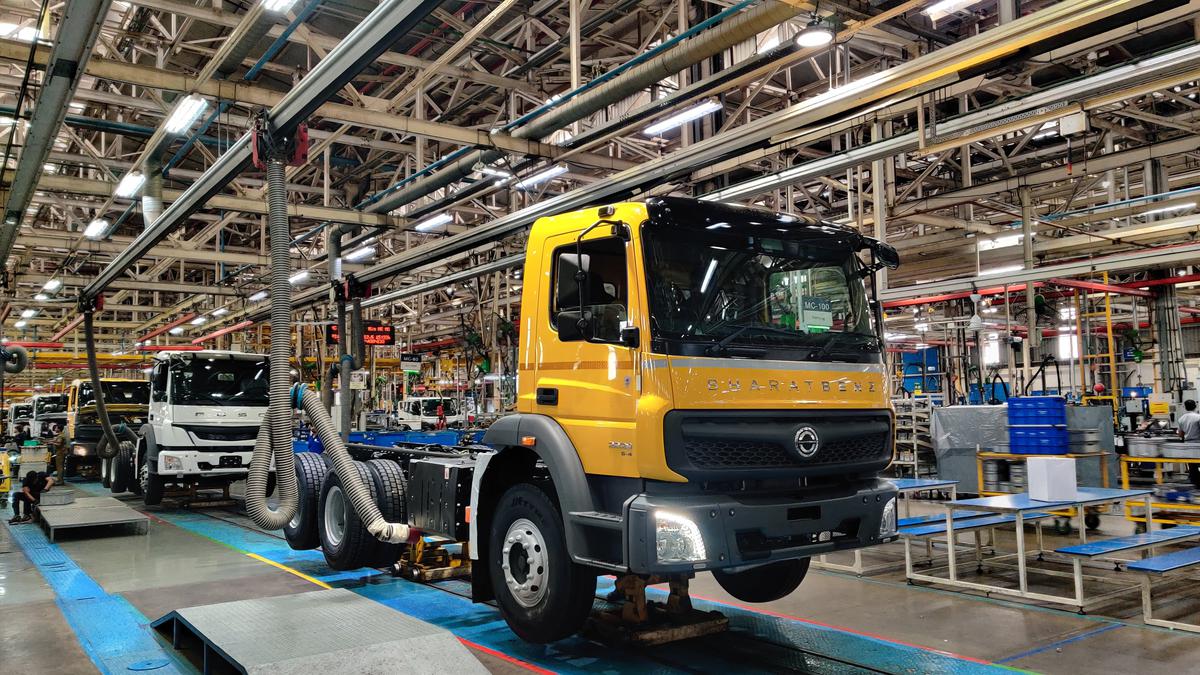
DICV plans to ramp up production capacity in two phases
The Hindu
Production capacity will be increased by 39% to 50,000 units
German truck and bus maker Daimler India Commercial Vehicles (DICV) is planning to ramp up production capacity in two stages as the Oragadam plant is operating in full swing, said MD & CEO Satyakam Arya.
“Currently, both production lines are operating at 100% capacity in two shifts,” he said during an interaction. “We are producing 36,000 vehicles per annum against the annual installed capacity of 72,000 units,” he added.
Over the next few months, production capacity will be increased by 39% to 50,000 units by debottlenecking the production line and ramping up supply chain. “This will not lead to any major capex,” Mr. Arya said.
“The enhanced capacity will be sufficient for us until 2025. Thereafter, we will take a call depending on the market growth rate,” he said.
However, Mr. Arya was cautious in his forecast as he expects the market demand for trucks and buses in 2024 either to be flat or decrease slightly as it is an election year.
During CY2022, DICV posted 37% growth in revenue and 25% in sales volumes.

The Union Budget unveiled on February 1, 2025, has come at a time of unprecedented global uncertainty and a flagging domestic economy. The real GDP growth is estimated at 6.4% for 2024-25 and between 6.3-6.8% for 2025-26, a far cry from >8 percent growth required annually to make India a developed nation by 2047. While much attention has been devoted to the demand stimulus through income tax cuts, not enough is said about the proposed reforms in urban development, tariff rationalisation, and regulatory simplification aimed at making Indian cities and corporates more competitive. Since the majority of economic activity is located in cities (urban areas account for ~55% of GDP) and produced by large corporates (~40% of the national output and 55% of India’s exports), the above-mentioned reforms have a pivotal role in improving India’s trend growth rate. Below we unpack each reform.












